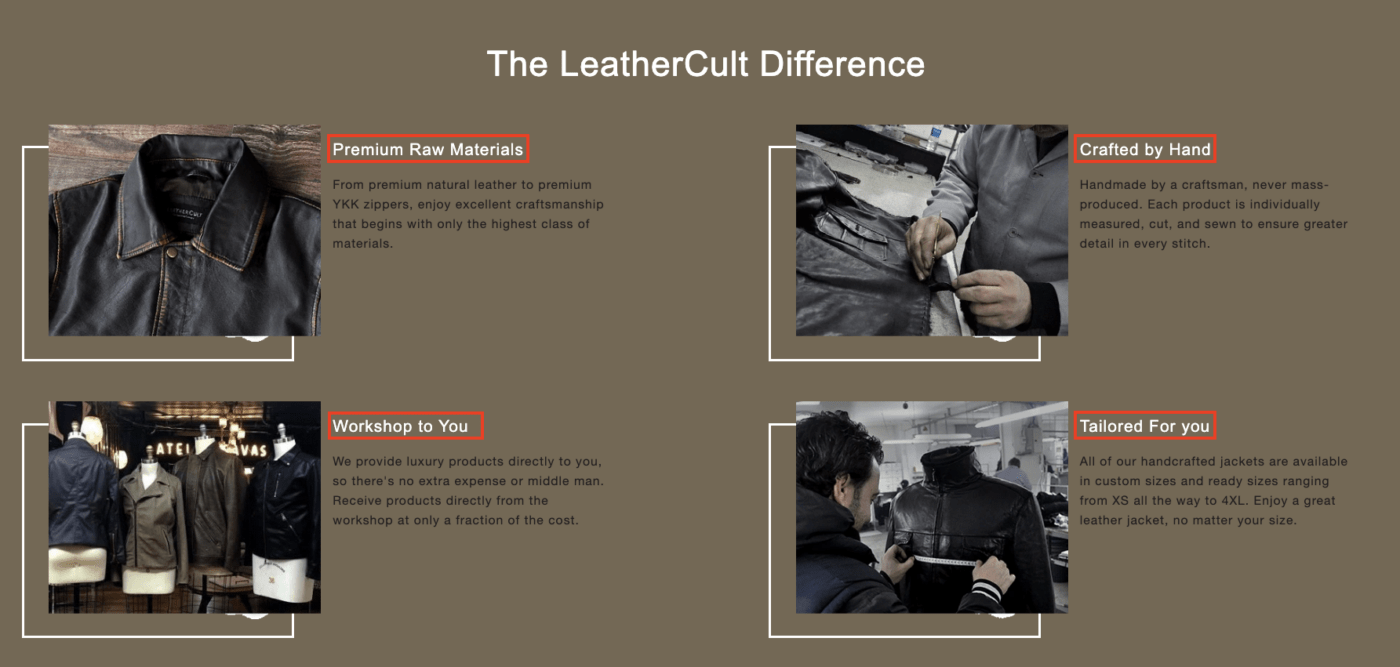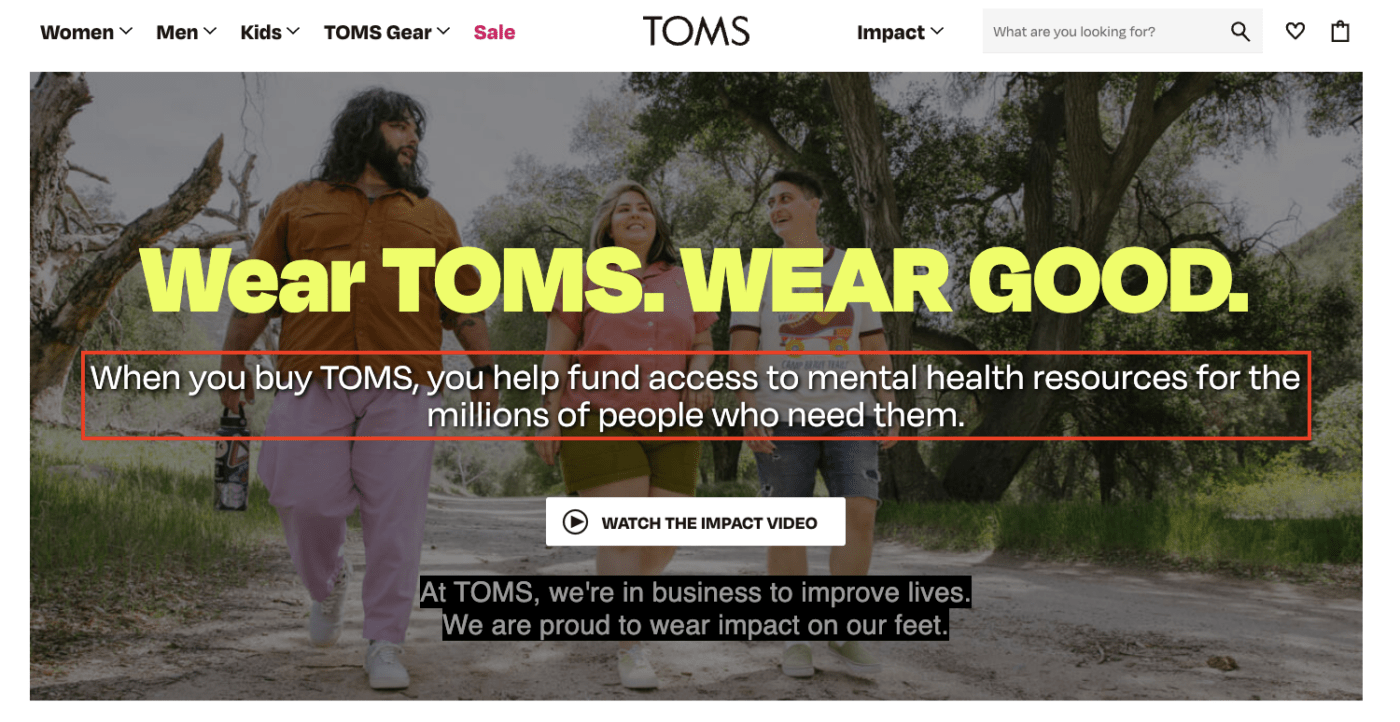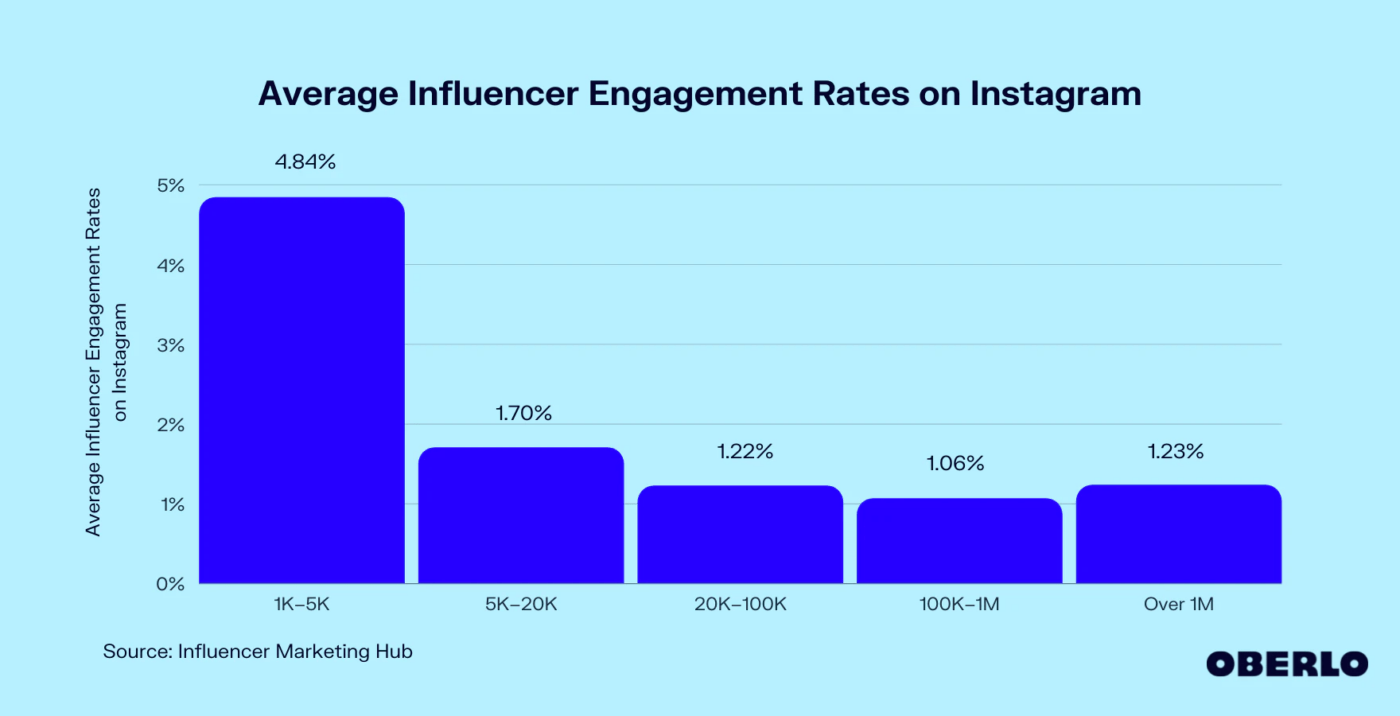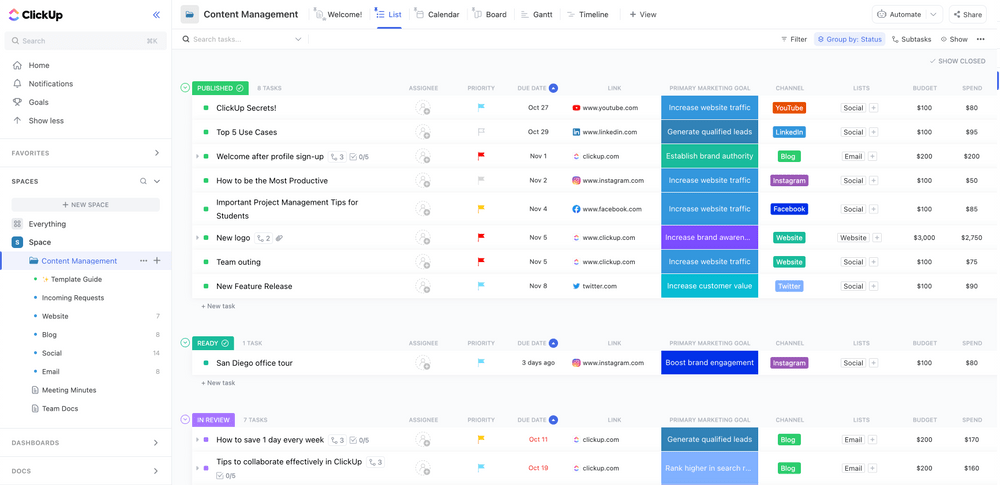

Are you ready to take your brand to the next level but not sure where to start?
With so many brands battling for attention, how can you make sure your brand is the one that resonates with your target audience? Or, better yet, come to the top of the mind at the right moment in the buyer’s journey.
The answer lies in thinking outside the box and leaning into creative brand management strategies. Because sometimes, you just need a little pizazz to help your brand stand out.
So, if you’re serious about building a successful business that stands the test of time, don’t underestimate the power of investing in brand management software and strategies to help you get the job done right.
We’ll explore eight creative strategies you can implement today to improve your brand management game. From building a creative strategy to brand positioning to using tools for effective brand management, these successful brand strategy examples will help you take your brand to the next level and stay ahead of the competition.
So, let’s dive in!
- What is Strategic Brand Management?
- Important Factors to Consider When Developing a Brand Management Strategy
- 8 Creative Brand Management Strategies You Need to Implement Today
- The Importance of Successful Brand Management
- Unleash Your Brand’s Potential with Creative Brand Management Strategies and Tools
What is Strategic Brand Management?
So what does it take to build a successful brand? Well, it all starts with strategic and effective brand management and strategies. But what exactly does that mean?
Simply put, strategic brand management involves creating, maintaining, and continuously improving your brand personality, positioning, and marketing efforts. This helps to ensure that your brand remains competitive and relevant in the ever-evolving marketplace.
Strategic brand management also helps to build customer loyalty, increase brand recognition, and foster relationships with stakeholders. This helps to ensure that your brand remains competitive and relevant in the ever-evolving marketplace. All in all, effective brand management is reputation management that leads to enhanced brand performance, greater customer loyalty, increased brand recognition, and a stronger brand reputation.
Pro Tip
Plan, track, and manage all your brand management tasks, projects, and more, and establish a seamless workflow with the Brand Management Template by ClickUp. This template comes with everything you need to stay on top of your projects, timelines, resources, to-dos, and so much more. Plus, it’s customizable, so you can configure your work view to support your project needs and workflow preferences.

Important Factors to Consider When Developing a Brand Management Strategy
Here are three important factors to brand managers should consider when developing a successful brand management strategy:
- Understand your ideal customers and what motivates them to choose your product or service over your competitors
- Analyze the competitive landscape and identify what sets your brand apart
- Make sure your brand values are clearly defined and aligned with your audience’s expectations
But here’s the thing, strategic brand management isn’t a “fix-it-and-forget-it” solution like your mom’s Crockpot recipe for beef stew that you cooked every week in college. It’s an ongoing process that requires constant ideation sessions, performance evaluation, and strategy adjustments.
Building a successful brand requires careful consideration of all the elements that make up your brand “recipe.” You need to consider the specific ingredients: your target audience, values, and messaging, and how they’ll create a unique and appealing brand.
And just like with cooking, you must experiment, taste, and adjust your brand management strategy to ensure your brand positioning is hitting all the right notes with your customers.
Pro Tip
Since there are a lot of moving parts, try out free strategic planning templates to keep you on track and moving toward your desired goals. The Strategic Plan Whiteboard by ClickUp provides a visual roadmap that easily shows what steps are necessary for strategic planning and how those steps can (and should) flow into each other in the context of the larger project.

8 Creative Brand Management Strategies You Need to Implement Today
Here are eight creative brand management strategies and successful brand strategy examples that you need to know about to build a powerful brand identity.
1. Create a unique brand identity
Your brand identity is what your brand stands for. It helps set your business apart, making your brand unique and memorable.
To improve your brand perception and reputation, it’s advisable to keep the basic brand guidelines in mind when you’re outlining your mission statement, brand values, target audience, and brand voice.
Here are a few notable examples to help you build strong company core values and improve your brand positioning:
1️⃣ Tailor Brands proudly displays its mission statement and target audience on its website’s “About” page.

2️⃣ Another effective approach is to focus on your product’s unique features or benefits. For instance, as a fashion brand that sells leather jackets, you might want to highlight the quality of the materials, the craftsmanship involved in their production, and the personalized style they offer.

3️⃣ You can also cultivate a strong brand identity that reflects the values and aspirations of your target audience. This branding strategy might involve developing a distinctive visual style and leveraging storytelling to create an emotional connection with customers or engaging in social and environmental initiatives that resonate with your audience, like TOMS.

Once you’ve solidified your brand’s purpose, the visual branding elements come into play, like a memorable logo and picking the right color schemes and fonts.
The small details matter; keeping them consistent across all your branding materials will help create a cohesive brand image that customers can easily recognize and remember.
You want your customers to be able to pick out your product from a shelf or recognize your logo on different advertisements. The idea is to stand out and not blend in, so don’t be afraid to think outside the box and be different.
Pro Tip
Establish your brand values and enhance your brand’s reputation with the help of brand guidelines templates! Use templates like the Brand Guidelines Template by ClickUp to give you a solid start when crafting your brand guidelines. It’ll walk you through all the basics and help you focus on the most important branding questions.

2. Focus on customer experience
Personalization can help provide a seamless and enjoyable customer experience. You can use artificial intelligence (AI) and predictive analytics to create messaging and content that appeals to your customers, delivering a more relevant and engaging customer experience.
Here are a few strategic brand management examples you can explore to improve customer experience:
1️⃣ Netflix and Amazon are two leading brands offering personalized experiences. In this example, Amazon shares product recommendations based on your past purchases to give customers relevant ideas and products to keep them engaged and continue their buying journey.

2️⃣ Netflix sends emails that provides show or movie recommendations based on your watch history.

So, if you want to build a loyal customer base and differentiate yourself from the competition, prioritize customer experience in your brand management strategy.
Here are some other simple ways to improve the customer experience:
- Simplify the buying process and minimize the number of steps
- Respond to customer questions and concerns as soon as possible
- Be transparent about pricing, policies, and product information
- Train staff to provide excellent customer service and handle complaints professionally
- Collect customer feedback to improve products and services
- Offer value beyond the product or service, such as educational resources or customer loyalty programs
- Ensure consistent experiences across all touchpoints, from online to in-store
- Emphasize quality in all aspects of the customer experience, from product design to packaging and delivery
As for growing and nurturing your leads and customers, you need to provide a positive experience for your customers at every touchpoint and better understand their needs, preferences, and pain points. That’s why customer experience should be a key part of your brand strategy.
For effective brand management, you’ll need customer relationship management software or CRM software to help you keep track of your customers, leads, complaints, and so on. A comprehensive CRM tool can be your one-stop-shop for all customer-related information—manage and improve brand reputation, monitor brand performance, and win customer loyalty by staying organized and responsive to your customers’ needs.
Pro Tip
Build your custom CRM in ClickUp or use a pre-built CRM Template by ClickUp to keep track of your contacts and manage brand management projects all in one place. It allows you to customize your contact statuses and add additional fields for maximum contact organization and personalization.

3. Leverage social media
With 90% of Instagram users following a business, it shows that social media has become a vital part of any successful brand strategy.
Why? It’s a simple way to connect with your audience in a more authentic way and build meaningful relationships. Plus, you can reach a wide audience with minimal effort. Think about how many emails you’d need to send to equal the reach of one Instagram post. It’s like comparing apples and grapefruits.
What’s the secret sauce to social media success? Consistency across your marketing efforts.
Respond to comments, like and share user-generated content, and participate in relevant conversations. These simple actions show that you care about your community and want to build a relationship with them.
You can start by creating a branded hashtag that customers use to share their experiences and connect. A specified hashtag also helps solidify a cohesive brand identity and makes it easy for you to track user-generated content. By amplifying your brand purpose and increasing your brand’s visibility, you can create a snowball effect that attracts new customers to your brand.
Here’s a strategic brand management example for social media that you can look into to improve your brand reputation:
1️⃣ Glossier’s Instagram feed is a carefully curated blend of user-generated content, product shots, and lifestyle imagery. By asking followers to share their experiences with Glossier products and using those images on social media, Glossier has created a community of fans who feel like they’re part of something special.

Pro Tip
Use a content calendar template to help you schedule your monthly social media posts. It’ll keep you on track while also holding you accountable. Then, to fully unlock the power of social media, you must also set up a social media workflow where you engage with your audience across platforms.
4. Tap into the power of storytelling
The Farmer’s Dog’s Super Bowl commercial evoked strong emotions in pet owners and lovers alike. Why? It tells a relatable story of a woman and her dog, which resonates with many pet owners and lovers who understand the bond between a human and their furry companion.

It portrays the story of a woman and her black Labrador puppy named Bear, starting when she was a young girl. Throughout the ad, the viewer witnesses the pair’s adventures, including walks and trips to the beach, as they age together.
Eventually, the woman leaves for college, leaving Bear behind. However, as time passes, the woman becomes an adult and starts a family of her own. Bear remains by her side despite his age as she navigates marriage and parenthood.
The message? Dogs are precious. Dogs are loyal. And dogs deserve healthy food.
By tapping into the power of storytelling and highlighting the importance of healthy dog food, Farmer’s Dog could create a narrative that aligned with its brand’s core values and mission (chef’s kiss).
Trust and relatability are the foundation of a strong brand reputation. Highlight unique angles and values that resonate with your target audience, humanize your brand’s voice, and make it more relatable, to increase consumer trust and engagement and strengthen your brand’s reputation.
Pro Tip
Write blog posts, scripts, and more, and easily collaborate with team members and others in ClickUp Docs. This feature provides pages with formatting options, collaborative editing, tags, and editing history where you can develop your stories, campaigns, articles, and more. This Ultimate Guide to Using ClickUp Docs has a step-by-step guide that’ll get you familiarized with the feature so you can get started faster.
5. Collaborate with influencers
Studies show that almost 75% of people agree there are too many ads on social media. They’re overwhelming, repetitive, and, more often than not, irrelevant. That’s where influencers can help.
Influencers have established themselves as trustworthy leaders in their respective niches and have a loyal following of engaged fans. Some influencers, like Charli D’Amelio, have over 100 million followers on TikTok (mega-influencers), while others have less than 50,000 ( micro-influencers). And surprisingly enough, although they have fewer followers, micro-influencers tend to have higher engagement rates with their audience.

By partnering with influencers, you can tap into their audience and leverage their influence to promote your brand. Data shows that about 82% of people are “highly likely” to buy something a micro-influencer recommends. It’s hard to pass on this opportunity. They do the selling for you. And the best part? It doesn’t come off as a sales pitch to the consumer. That ideal scenario, right?
Here’s a strategic brand management example that uses the power of influencer collaborations:
1️⃣ Athletic Greens is a great example of a brand successfully leveraging influencer marketing. If you’ve watched any travel-related vlogs over the last year or so, you’ve likely seen one or more influencer campaigns from Athletic Greens. For instance, they’ve partnered with several high-profile travel YouTubers, like Kara and Nate, with 3.44 million followers, to promote its all-in-one nutritional greens powder.

They diversified their influencer mix by partnering with different follower counts across the travel niche, and by doing so, they have reached a wider audience and increased their credibility among consumers. And with health supplements, trust is everything.
Pro Tip
Easily create an influencer contract that adheres to your rules and conditions with the Influencer Contract Doc Template by ClickUp. By using this template to share and sign this agreement, you’re switching to an online Doc template that enables you to send your document through email, gather signatures in any desired sequence, and instantly convert your completed contract into a PDF.

6. Foster brand loyalty
Loyal customers are your brand’s best friend. They’re more likely to shout from the rooftops about how much they love your brand and customer experience and refer your products to family and friends, which is at least five times more effective than paid ads. So why not capitalize on this low-hanging fruit? To foster brand loyalty, you can create a loyalty program that rewards customers for their continued support.
For instance, offer exclusive offers, free samples, and special deals to show appreciation for their business. This simple brand strategy can help incentivize repeat business and make customers feel like they are part of an exclusive community. And when you deliver on your brand promises, you can create a positive experience that keeps them excited and coming back for more.
It comes down to three simple things: delivering on your brand promises, creating positive customer experiences, and offering incentives to keep them returning for more.
Here’s a strategic brand management example that promotes brand loyalty and enhances brand performance:
1️⃣ Take Ulta Beauty, for example. Their Ultimate Rewards program offers customers a range of perks, including exclusive discounts, free products, and birthday gifts. The more a consumer spends, the more rewards they earn. And landing a spot in the coveted Diamond status makes the consumer feel like Ulta Beauty royalty, so naturally, consumers strive for the best status.

It’s similar to receiving Starbucks’ coveted personalized gold card rewards card. It’s like a right of passage for high schoolers and college kids when paying for their vanilla bean frappuccinos. Follow the lead of Ulta Beauty and Starbucks to use loyalty programs to build a community of brand advocates who are passionate about your products and eager to spread the word.
7. Build a library of niche content
Did you know that 68% of online instances begin with a search engine?
That’s right. Even if consumers know your website by heart, they still search for your brand on Google and click the first result. And if they start with a non-branded search, how’ll people know your brand exists?
The answer? Content.
Building a library of niche content is key if you want to establish your brand as an authority in your industry and boost brand awareness. That way, your brand can appear at the top of the search engine results page (SERP) for people to click on. Of course, it’s easier said than done. The process involves creating a repository of high-quality, informative, and engaging content that speaks directly to your target audience.
In other words, write content that aligns with the search intent.
For example, suppose your company sells board meeting management software. In that case, you could create a library of content focused on topics like:
- Best practices for conducting virtual board meetings
- How to create effective meeting agendas
- Comparing the best free board minutes templates to streamline meetings
By providing valuable insights and resources on these niche topics, you can position your brand as a thought leader and attract potential leads who’ll turn to you for industry insights and advice. And, of course, you’re not just limited to blog posts. Double down on various content types, such as videos, infographics, eBooks, white papers, and more, to expand your reach.
Here’s a strategic brand management example that encourages customers and website visitors to engage with your content:
1️⃣ Stay top of mind by creating an email opt-in where visitors can sign up for your newsletter. They’ll receive an email when you decide to share these high-quality pieces of content. That way, you can build a robust email list of potential leads. Meanwhile, your website visitors win because they now get this information delivered straight to their inboxes.

So the next time you publish that marketing campaign management guide you spent weeks putting together, they’ll be the first to know about it. And actually use it. Talk about a win-win.
Pro Tip
Brand managers can plan, track, and manage everything you need to plan and create content across multiple channels (website, blog, social, and email) in one place with the Content Management Template by ClickUp. It provides a solid framework to start with and is fully customizable to let you configure your work your way. Use this template to support your end-to-end workflow from request intake to planning with docs, maintaining an editorial calendar, and delivering content.

8. Embrace innovation
Follow Apple’s lead by embracing innovation rather than distancing yourself from it. You must watch for the hottest trends to stand out in today’s fast-paced digital landscape.
For instance, AI is taking LinkedIn and Twitter headlines by storm. It’s worth dipping your toe in the water to see if it works for your brand. But don’t stop there. Keep tabs on your competitors and consumer preferences, too. And if you find yourself falling behind the curve, don’t be afraid to rebrand or try new approaches to your brand strategy.
Here are a couple of examples of companies embracing innovation:
1️⃣ Take Matchr, for example. This service, which connects HR business requirements with HR software vendors, was first established in 2012 under the name “HR Payroll Systems,” but that limited them only to payroll software.
Nowadays, there’s an all-in-one HRIS software that includes these payroll features. So they changed the name to Matchr in 2021 and updated the design elements to make it more modern.

The rebrand helped align the service to the name, reducing client confusion and scoring more opportunities to match HR professionals with their software needs. Thankfully, innovation doesn’t have to mean reinventing the wheel, either. Sometimes, it’s just a matter of thinking outside the box.
2️⃣ Nike’s virtual shoe try-on is a prime example of using emerging technologies to enhance the customer experience.

So, don’t be afraid to get creative and experiment with new ideas. You never know what might resonate with your audience and set your brand apart (adding to your brand’s personality). Do your research and stay up-to-date with the latest trends and technologies. And keep a close watch on changing consumer preferences, and not be afraid to rebrand to stay relevant.
The Importance of Successful Brand Management
Without a clear vision and consistent brand message, your customers may become confused about what your company stands for, leading them into the open arms of your competitors.
Think about your favorite brand — what sets it apart from the competition? It has to do with more than just the product itself. It’s the entire experience that comes with it.
Take Nike, for example. Nike hits the nail on the head. With their killer combination of stylish yet casual designs, creative collaborations, accessible pricing, and high-profile marketing campaigns that tackle social issues head-on, Nike has become a favorite among many generations.
They’re not just a shoe company but a lifestyle brand that inspires people to push their limits and pursue their passions. Nike’s message of empowerment and self-expression resonates with customers worldwide, making them more than just a company that sells shoes—they’re a cultural phenomenon.
All in all, customers are more likely to remember and recommend a brand that resonates with them on a deeper level. Invest in creating an impactful brand with effective brand management strategies and tools to maximize your marketing efforts.
Take the bull by the horn and invest in the proper brand management strategies today. It’ll help you improve your company’s reputation and make it more attractive to potential customers. To do this well, consider using project management tools and hiring professionals with expertise in this area, such as agencies or those specializing in freelance writing jobs.
Unleash Your Brand’s Potential with Creative Brand Management Strategies and Tools
Remember, you don’t have to pick just one brand management strategy. You can go all in and adopt all eight strategies or stick to one or two. But keeping it an ongoing process that gets your undivided attention is the key. And if one strategy delivers lackluster results, kick it to the curb and try something fresh.
The key? Stay current with the latest trends, invest in a project management tool to establish an effective brand management process, and always put your customers first. It’s a simple formula to set your brand up for long-term success.
So, what are you waiting for? It’s time to take your brand to the next level, and if you need help getting started, revisit the pro tip sections above for insightful tips and free marketing templates to get you started!

Guest Writer:

Nidhi Kala is a freelance writer for B2B SaaS brands in marketing, HR, and eCommerce. When she’s not writing, her artistic mind is buried in creating a new journal spread or exploring calligraphy scripts.



